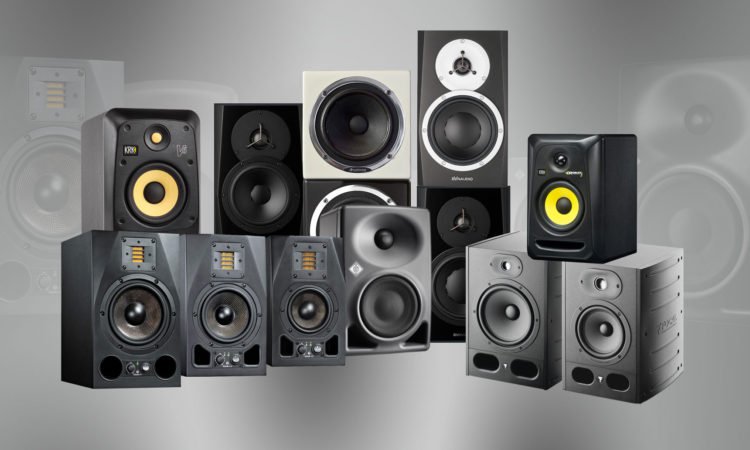Best Studio Monitors Under 50000
July 10, 2023 2024-05-14 12:41Best Studio Monitors Under 50000

Best Studio Monitors Under 50000
Introduction: Best Studio Monitors Under 50000
When it comes to producing high-quality audio, having the right tools is crucial. One such essential tool for audio professionals and enthusiasts is studio monitors. Studio monitors, also known as reference monitors or speakers, play a vital role in accurately reproducing sound, allowing you to make precise adjustments to your audio mix. In this blog post, we’ll explore the best studio monitors under 50000 rupees, providing you with a range of options that deliver exceptional sound quality without breaking the bank.
5 Best Studio Monitors Under 50000
1. Genelec 8030C Studio Monitor
The Genelec 8030C is a compact studio monitor that punches well above its weight. With a frequency response of 47Hz to 25kHz, these monitors offer precise and detailed sound reproduction. Equipped with Genelec’s Minimum Diffraction Enclosure (MDE) technology and advanced Directivity Control Waveguide (DCW), the 8030C ensures an accurate sound image and controlled dispersion. These monitors are ideal for small studios and post-production setups.
2. Adam Audio A7X Studio Monitor
The Adam Audio A7X is a popular choice among audio professionals due to its exceptional audio quality. Featuring a frequency response of 42Hz to 50kHz, the A7X offers a transparent and balanced sound reproduction across the entire spectrum. With its X-ART tweeter and mid-range driver, these monitors provide excellent transient response and precise imaging. The A7X is suitable for both mixing and mastering applications.
3. Focal Shape 65 Studio Monitor
Focal is renowned for its high-quality audio products, and the Shape 65 studio monitor is no exception. These monitors feature Focal’s innovative flax sandwich cone, which combines rigidity and lightness for accurate and detailed sound reproduction. With a frequency response of 40Hz to 35kHz, the Shape 65 delivers extended bass and smooth highs. The monitors also incorporate dual front-firing ports for improved low-frequency response.
4. Yamaha HS8 Studio Monitor
Yamaha is a trusted name in the audio industry, and the HS8 studio monitor is a testament to their commitment to quality. The HS8 features an 8-inch woofer and a 1-inch dome tweeter, providing a frequency response of 38Hz to 30kHz. These monitors offer a neutral and honest sound reproduction, making them suitable for mixing and critical listening. The HS8 also includes room control and high trim response controls for optimal sound adjustment.
5. JBL 308P MkII Studio Monitor
The JBL 308P MkII is a budget-friendly option that doesn’t compromise on sound quality. These monitors feature JBL’s Image Control Waveguide for accurate imaging and a wide sweet spot. With an 8-inch woofer and a 1-inch tweeter, the 308P MkII delivers a frequency response of 45Hz to 20kHz. These monitors are perfect for home studios and smaller production environments.
Benefits of Studio Moniters
Studio monitors, also known as reference monitors or studio speakers, are a crucial tool in the world of audio production and mixing. These specialized speakers offer several key benefits that make them indispensable for professionals and serious enthusiasts alike:
-
Accuracy: Studio monitors are designed to provide a flat frequency response, meaning they reproduce sound without coloring or exaggerating any particular frequencies. This accuracy is vital for audio professionals who need to make precise decisions about sound quality, mixing, and mastering.
-
Detailed Sound: Studio monitors excel at revealing even the smallest details in audio recordings. This level of detail allows producers and engineers to hear imperfections, artifacts, or nuances that may go unnoticed on consumer-grade speakers.
-
Consistency: Studio monitors are built to deliver consistent sound reproduction across various listening environments. This consistency ensures that the audio mixes and recordings created on these monitors will translate well to different playback systems, including home stereos, car audio systems, and more.
-
No Built-in Equalization: Unlike consumer speakers, studio monitors typically lack built-in equalization (bass or treble boost) or sound-enhancing features. This “flat” response encourages users to make accurate decisions based on the raw sound of the audio, rather than relying on speaker coloration.
-
Precise Stereo Imaging: Studio monitors offer excellent stereo imaging capabilities, allowing sound engineers to precisely position and pan audio sources in the stereo field. This is crucial for creating a well-balanced mix where each element has its own space.
-
Low Distortion: Professional studio monitors are designed to have minimal distortion, ensuring that the sound remains pure and faithful to the original recording. This is especially important for critical listening during recording and mixing sessions.
-
Amplification Flexibility: Studio monitors come in both active (powered) and passive (unpowered) versions. Active monitors have built-in amplifiers, which eliminates the need for external amplifiers and simplifies setup. Passive monitors offer flexibility for users who prefer to use their own amplifiers.
-
Durability: High-quality studio monitors are built to withstand the rigors of professional use. They are constructed with robust materials and designed for long-term reliability, making them a sound investment for audio professionals.
-
Customization: Some studio monitors allow users to adjust settings like volume, EQ, and crossover points to tailor the sound to their preferences and the acoustic characteristics of their studio space.
In summary, studio monitors provide unparalleled accuracy, consistency, and detail in audio reproduction. These benefits make them an essential tool for recording, mixing, and mastering tasks, ensuring that audio professionals can create high-quality, professional-grade audio that translates well across various playback systems.
Conclusion:
Investing in a pair of high-quality studio monitors is essential for anyone serious about audio production. The models mentioned above, including the Genelec 8030C, Adam Audio A7X, Focal Shape 65, Yamaha HS8, and JBL 308P MkII, offer exceptional performance without exceeding a budget of 50000 rupees. Remember to consider factors such as frequency response, transient response, and room size when selecting the best studio monitors for your needs. With the right set of studio monitors, you can elevate your audio production game and achieve professional-level results.
Looking for more blogs likes this click on this link https://angelsmusicacademy.com/blog/
Related Posts
Build a Home Recording Studio on a Budget
Music Production Degree
Music Production Studio in Jaipur
How to write and produce your own music
Search
Categories






